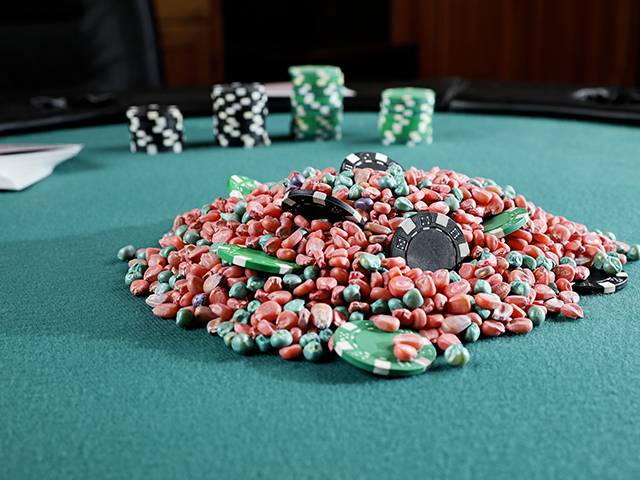Inside the Market
The Flop Has Been Played
I realize some may not appreciate the corn and soybean markets they depend on for a living being compared to a poker game, but the similarities are striking and can teach us a lot. In both cases, the game or marketing year starts with little known about what lies ahead.
In Texas Hold'em, you're dealt two private cards facedown, and the odds immediately start to tilt toward you or against you. In farming, I equate that to the early estimates given at USDA's Annual Outlook Forum in February. Each year, USDA's estimates start with a sense of potential about what lies ahead, but never is there enough information to confidently know how things will turn out.
BULLISH IN FEBRUARY
In 2021, the USDA's February forum was uncommonly bullish, estimating 1.55 billion bushels (bb) of U.S. ending corn stocks and 145 million bushels (mb) of U.S. ending soybean stocks for the new 2021-22 season. Both were slightly higher than estimates for the previous seasons but also among the lowest of the past eight years. It was as promising for higher corn and soybean prices as being dealt a pair of aces.
Planting season went well in 2021, but conditions in the central and northwestern Midwest are being threatened by dry weather, and so far, the weather pattern hasn't shown much inclination for change.
P[L1] D[0x0] M[300x250] OOP[F] ADUNIT[] T[]
The next important information event was USDA's June 30 "Acreage and Grain Stocks" reports, something akin to the flop where three cards are dealt face up for all to see.
TURNING POINT
Like the flop, USDA's June 30 reports represent a major turning point in the game where players are either given hope or often throw in their cards, realizing the odds just got worse. During the pandemic of 2020, the outlook for grain prices was abysmal until the first glimmer of hope emerged from lower-than-expected planting estimates on June 30.
In 2021, players holding a pair of aces were given a third ace in the flop as USDA came through with both, lower-than-expected planting estimates and grain stocks estimates, for both corn and soybeans. In market terms, even if the weather improved tomorrow and crop conditions improved the rest of the summer, it would be difficult for the U.S. to replenish its large corn and soybean surpluses of recent years.
Those betting on higher corn plantings and lower corn prices before the flop threw in their cards and surrendered their chips. Similarly, for soybeans, bearish bets folded. A figure of 87.6 million soybean acres is not enough to produce the 4.42 bb of demand USDA expects in 2021-22.
The uncertainty of 2021 is not over yet -- there are still cards that haven't been played, but at this point, it's looking like corn and soybean prices will hold their higher levels for another season. Weather and China's demand will have a lot to say about where the game goes from here. ///
**
-- Read Todd's blog at about.dtnpf.com/markets.
-- You may email Todd at todd.hultman@dtn.com, or call 402-255-8489.
[PF_0821]
(c) Copyright 2021 DTN, LLC. All rights reserved.




